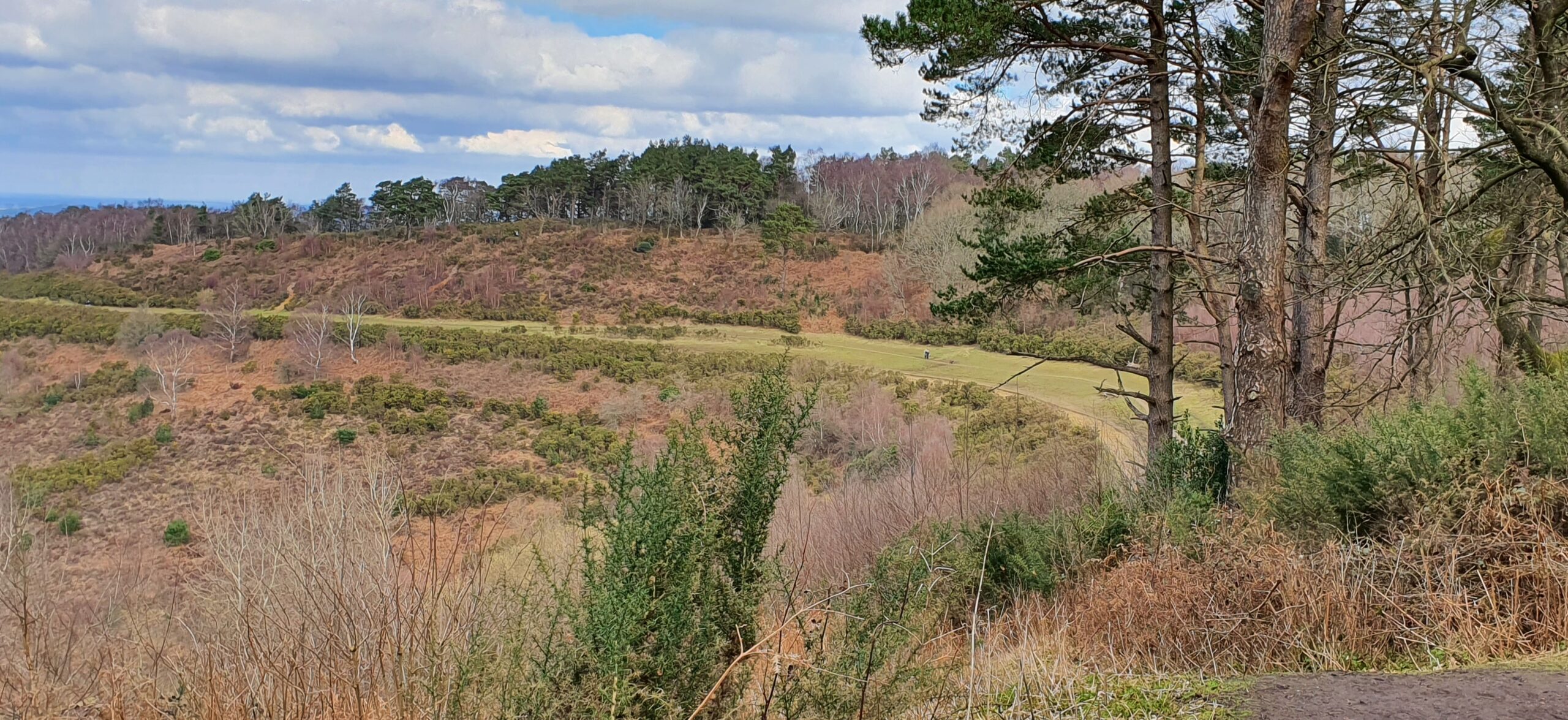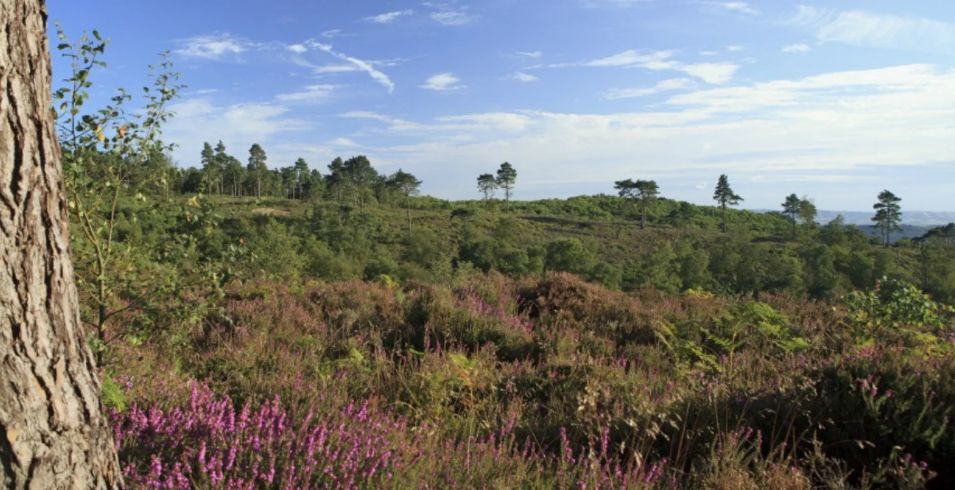The National Trust properties at Hindhead, principally the Devil’s Punch Bowl and Hindhead Common, were some of the first open spaces acquired by the National Trust in 1906. Unfortunately for many years Hindhead Common was separated from the Punch Bowl by the A3 trunk road. However, since the opening of the A3 Tunnel the two sites have been re-united and now comprise over one thousand acres of some of the most spectacular open space in Britain.
The higher ground of the Punch Bowl’s magnificent horseshoe-shaped valley is heathland. The valley, which is the largest spring-sapped valley in Europe, was formed by erosion from a series of springs which now feed Smallbrook stream. We know that the valley floor had a small field system as far back as Saxon times.
Hindhead Common is dominated by Gibbet Hill, at 892 feet it affords spectacular views to the north, east and south. Much of it is open heathland but there is an area of woodland at Hurt Hill on the south-eastern flank, some of which is coppiced.

How to get there
By road:
From the A3 follow signs for Haslemere and then at the Hindhead roundabouts continue straight to the signposted Devil’s Punch Bowl. From Haslemere follow signs to Hindhead and turn right at the Hindhead roundabout.
By rail:
South West Trains operate frequent services to Haslemere with onward regular bus services to Hindhead.
Where to park
Park in the National Trust pay and display car park. Free to National Trust members.
What to look for
Look out for the café, open daily serving tea, coffee and hot and cold snacks, and then explore miles and miles of marked footpaths in and around the Punch Bowl and Hindhead Common. Take a look at our Walks page for a few suggested routes.
For more information and a site map, click here to go to the National Trust site.
Fauna and Flora of particular interest
The lowland heath of the Punch Bowl and Hindhead Common is a very important habitat for a number of endangered species, including ground nesting birds such as the nightjar, woodlark and the Dartford warbler, and the beautiful silver-studded blue butterfly. Much of it has been designated a Site of Special Scientific Interest (SSSI) and Special Protection Area (SPA).



